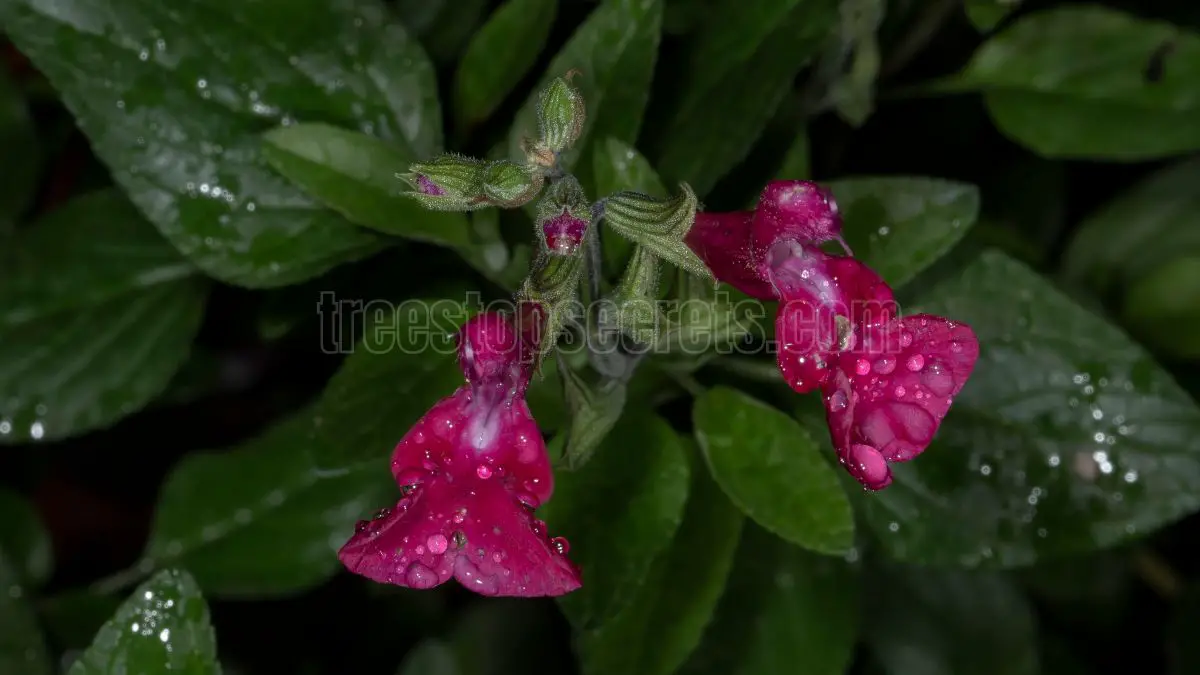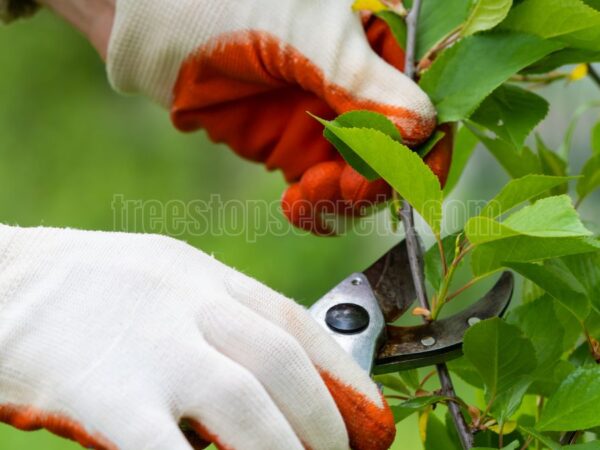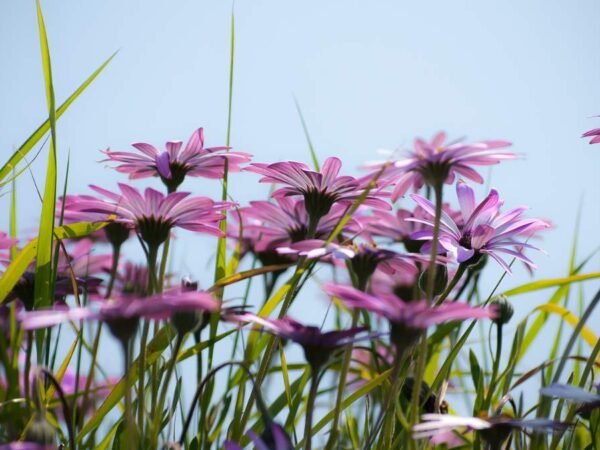Salvia greggii, commonly known as autumn sage, is a stunning perennial cherished for its vibrant flowers and resilience in diverse climates. This low-maintenance plant thrives in gardens and landscapes, attracting pollinators while providing a splash of color. In this post, we'll uncover essential tips for growing and caring for Salvia greggii, ensuring your garden remains lively and colorful throughout the seasons.
Salvia greggii is a drought-tolerant perennial native to Texas and Mexico. Known for its tubular flowers that bloom in a range of colors, including red, pink, and purple, this hardy plant is ideal for xeriscaping and attracts hummingbirds and butterflies. Its ability to thrive in various soil types and conditions makes it a favorite among gardeners.
Ready to add a burst of color to your garden? Salvia greggii is not only beautiful but also incredibly easy to care for. In this article, you'll find everything you need to know, from planting tips to maintenance advice. Don't miss out on the chance to create a vibrant outdoor space that delights both you and local wildlife!
Understanding Salvia Greggii
Introduction to Salvia Greggii
I've gotta say, Salvia greggii, or Autumn Sage, is a showstopper in any garden. Hailing from Texas and Mexico, this bushy beauty flashes flowers in a rainbow of colors like red, purple, pink, yellow, and violet. From spring till the first frost, it puts on this non-stop flower show that's a feast for the eyes. If that’s not enough, it’s a magnet for butterflies and hummingbirds, so your garden becomes a lively kaleidoscope of colors and flutters.
Standing at a proud 2 to 3 feet with a similar spread, this evergreen wonder is right at home in well-drained soil. Whether sandy or rocky, it's good to go. Plus, Autumn Sage sips on very little water, making it perfect for eco-friendly gardening especially in dry places. Picture a garden that's not just pretty but planet-friendly too!
| Feature | Description |
|---|---|
| Common Name | Autumn Sage |
| Height | 2 - 3 feet |
| Spread | 2 - 3 feet |
| Bloom Period | Spring to Frost |
| Flower Colors | Red, Purple, Pink, Yellow, Violet |
| Water Requirement | Low |
Unique Features of Salvia Greggii
Autumn Sage adds a splash of color where other plants may start yawning and fading away. It’s like the garden’s own artist, painting with shades of red, orange, and yellow that pop against the backdrop of autumn leaves. This little gem stands tough against drought, making it ideal for those who might occasionally forget to play plant nanny.
When spring rolls around, Salvia greggii gets busy, decking itself out with blooms all the way to frost. It’s not just eye candy—it’s the star of garden chats and a great energy booster. This plant belongs to the mint family (Lamiaceae) and is a buzzing hub for bugs, butterflies, hummingbirds, and bees, adding life and movement to my patch of green.
Here’s a concise look:
| Unique Features | Description |
|---|---|
| Drought Tolerance | Thrives with little water |
| Bloom Colors | Captivating warm reds, oranges, yellows |
| Attracts | Butterflies, hummingbirds, bees |
| Evergreen Foliage | Keeps things lively all year |
Welcoming Salvia greggii into your garden could jazz up the space, bringing in bursts of color and inviting local wildlife for a wild garden party.
Growing Salvia Greggii
Optimal Growing Conditions
When I'm working with Salvia greggii, also known as Autumn Sage, it’s like giving the spotlight to a plant that craves bright, sunny stages. This plant loves the sun—think at least 6 hours of direct light each day. Give it soil that's like a sandy or rocky spa for its roots, ensuring it drains well so there's no swampiness. Salvia greggii takes a sip from the drought-tolerant cup, so it holds up in dry scenarios, making it a go-to choice for many gardens.
| Condition | Requirement |
|---|---|
| Sunlight | Full sun, 6+ hours |
| Soil Type | Well-draining, sandy/rocky |
| Water Needs | Minimal water |
Planting and Spacing Tips
When planting Salvia greggii, I feel like a choreographer spacing dancers for a well-coordinated routine. About 18 to 24 inches is the sweet spot between each plant, letting them have space to breathe and groove. This gap is key to keeping them in prime condition. If you're new to this dance, let the plants be for their first year—no trimming—so they can dig in and lay down strong roots. Later on, divide and conquer by transplanting young ones, a timely move that boosts their growth spurt.
| Spacing Recommendation | Distance |
|---|---|
| Between Plants | 18 - 24 inches |
Trimming Guidelines
Here's my playbook for keeping Salvia greggii snazzy and blooming like a timed fireworks display. I give them a tidy-up in early February to spur their growth for spring, then another light haircut in August to hold their shape together. A little sprinkle of high-nitrogen fertilizer during these times is like a power-up, keeping them in top form. Spot any old flower stems lurking around? A quick shear in the summer nudges them back into a blooming performance from May through November, turning the garden into a long-lasting spectacle.
| Trim Timing | Recommended Action |
|---|---|
| Early February | Light trim, boost with fertilizer |
| August | Light trim, tackle old flowers |
Salvia Greggii Varieties
Salvia greggii, with its colorful blooms and hardy nature, is a garden favorite. It's got a lot going for it in the flower bed and around the yard.
Diverse Flower Colors
The world seems brighter with Salvia greggii’s flower palette. This isn't just a plant; it's a rainbow in your garden. Initially, red was the go-to color, but now, it's enough to make a color wheel weep with joy. The blossoms pop up in whites, reds, pinks, salmon shades, and even purplish-red—each like a little burst of magic. They’re about the length of your pinky finger, and they collect at the end of the stems in a delightful bouquet. This splash of hues not only beautifies my patch of earth but lets me play around with color schemes.
| Flower Color | Description |
|---|---|
| Scarlet | Bold and in-your-face |
| Red | Traditional eye candy |
| Pink | Gentle, almost flirty |
| White | Clean and graceful |
| Lavender | Peaceful and laid-back |
| Apricot | Cozy and welcoming |
| Violet | Luxurious and profound |
Longevity and Maintenance
The staying power of Salvia greggii is a real treat. These plants can hang around for years with the right tender love and care, no shovels needed. Their ease of growth means I have more time to sip my iced tea rather than toil away. Standing between 1 and 4 feet tall, they fit snugly in all sorts of garden nooks and crannies.
| Feature | Details |
|---|---|
| Lifespan | Many good years |
| Typical Height | 1 to 4 ft |
| Width | Doesn't outgrow its place |
| Maintenance Level | Pretty low-maintenance |
Notable Cultivars
When it comes to Salvia greggii, some top picks stand out for their unique flair. Varieties like 'Furman's Red,' 'Big Pink,' 'Purple Pastel,' 'Cherry Chief,' and 'Desert Pastel' each bring their own swagger with different flowers and colors that shake up any garden scene. Across the pond in the UK, standout cultivars 'Javier' and 'Peter Vidgeon' have even nabbed the prestigious Royal Horticultural Society's Award of Garden Merit.
| Cultivar Name | Key Characteristics |
|---|---|
| Furman's Red | Flame-like flowers |
| Big Pink | Vast pink petals |
| Purple Pastel | Dreamy purple hues |
| Cherry Chief | Cheery cherry-red blooms |
| Desert Pastel | Sun-kissed peach petals |
| Javier | Blue-ribbon winner |
| Peter Vidgeon | Blue-ribbon winner |
These cultivars give me the freedom to mix, match, and create a garden tapestry that's both vibrant and personal.
Benefits of Salvia Greggii
Salvia greggii, or autumn sage if you prefer, is pretty much my garden’s MVP. It's like getting a combo deal with benefits that pack a punch, from giving my garden an environmental boost to spicing up my meals. Plus, it puts on a floral show that lasts longer than a box set binge.
Environmental Impact
One thing I love about Salvia greggii is how it’s like a welcome mat for bees, butterflies, and hummingbirds. It’s like having a wildlife party in my backyard and everyone’s invited! These little guys go around doing their pollinating thing, making sure everything stays green and lively Gregarious. By planting this, I’m not just sticking a plant in the dirt; I’m turning my garden into a bustling sanctuary that gives nature a helping hand.
| Benefit | Impact |
|---|---|
| Attracts Pollinators | Keeps nature buzzing |
| Supports Local Ecosystems | Healthier plants all around |
| Provides Food for Wildlife | Keeps the food chain rolling |
Culinary and Medicinal Uses
Salvia greggii doesn’t just sit pretty; it's a multitasker. Those leaves? Yeah, they’re the secret weapon in my kitchen. They’ve got this savory zing that can give meals a serious upgrade. And let’s not forget its cameo role in my medicine drawer—anti-inflammatory and antibacterial? Yes, please Gregarious. Whether it’s adding a kick to tonight’s dinner or being my go-to for soothing remedies, this plant is a total win-win.
| Culinary Use | Medicinal Use |
|---|---|
| Jazzing up dishes | Calming inflammation |
| Brew as tea | Helps digestion chill out |
| Fancy meal garnish | Keeps mouths happy |
Long Blooming Period
Now, if you're like me and love seeing your garden in full bloom, Salvia greggii delivers. From spring’s first yawn to the year’s final frost, this plant is all about keeping things lively. It's like having a colorful chatterbox in the garden—spares no excuse to spark chats and lift moods Gregarious. Those bright colors and sweet smells? They’re a guaranteed pick-me-up, day or night.
| Blooming Season | Visual Appeal |
|---|---|
| Spring to Frost | Always on show |
| Attracts Admirers | Gets neighbors talking |
| Uplifting Presence | Boosts the vibe |
Having Salvia greggii around has turned my garden into this vibrant nook buzzing with life and flavor. It’s more than just a plant; it’s a little piece of joy that makes gardening a whole lot more fun.
Regional Considerations
Suitable Climates for Salvia Greggii
Let's chat about Salvia greggii—it also goes by Autumn Sage, and boy, does it love the heat! This plant feels right at home in hot spots with just a sprinkle of humidity. It's native to Texas and Mexico, and it's a real champ in those toasty summers, even when the rain's nowhere to be found. Check out these primo weather conditions it digs:
| Climate Type | Average Annual Rainfall | Suitable Temperature Range |
|---|---|---|
| Dry climates | 15 to 34 inches | 60°F to 100°F |
| Somewhat dry | 20 to 30 inches | 50°F to 95°F |
Autumn Sage isn't just a one-season wonder—it struts its stuff from spring till frost. Bet this makes it a top pick for folks across the U.S. looking to jazz up their gardens.
Landscape and Design Suggestions
Now, when it comes to using Salvia greggii in your garden (or your own little slice of paradise), the options are endless. This tough little sub-shrub can fit in just about anywhere, bringing a pop of color and a smidge of ecological goodness. Here's the lowdown:
- In Pots: Got a patio or small space? Pop Autumn Sage in a container and watch it shine!
- Bunches and Clusters: Go big by planting in groups. Not only does it look fab, but it also plays nice with pollinators like bees and hummingbirds. Bonus—you're helping Mother Nature out!
- Garden Edges: Line your beds with Salvia greggii for a splash of color and form.
These choices aren't just easy on the eyes—they're low-maintenance too. Perfect for the gardener on the go.
Regional Adaptability
Salvia greggii earnestly handles itself like a pro in various spots. It's got a knack for dry spells and heat, making it a good fit for places like the Edwards Plateau with its wild limestone canyons and rich plant life. Here’s how it rolls with the changes:
- Weather and Light: Whether it's basking in full sun or chilling in a bit of shade, this plant fits right in.
- Dirt Preferences: Give it well-drained soil—rocky or sandy, just like what you'd find all over Texas—and it’ll thrive.
- Trimming Tips: A little haircut twice a year—in February and August—keeps it sprouting and showing off flowers, adapting naturally to different garden routines (Neil Sperry's Gardens).
With its rugged charm and kiss-of-death immunity to neglect, Salvia greggii is a top pick for any garden. It’s an easy mix of beauty and ecological support without the high maintenance fuss.
Research Insights
When I dug into Salvia greggii, I stumbled upon some pretty cool health perks that go beyond its garden charm. This little herb is packing more than just pretty petals.
Health Benefits of Salvia Greggii
Salvia greggii is turning heads in the health talks. Studies show it can slap down α-glucosidase activity, which helps keep blood sugar in check. Think of it as nature's answer to some antidiabetic meds you might know (NCBI). Folks eyeing a more natural path to health might find this herb intriguing.
But wait, there's more! This sage also works magic with fats. Its anti-lipase action outdoes its α-amylase game, hinting it might aid in fat digestion (NCBI).
| Health Bonus | What's Up? |
|---|---|
| Blood Sugar Check | Knocks out α-glucosidase, like acarbose. |
| Fat Breakdown | Superior anti-lipase vibes. |
Phytochemical Composition
Salvia greggii is like a treasure trove of goodies, especially with its caffeic acid plus rosmarinic acid holding the spotlight. This mix is a big deal for its healing potential.
Comparing decoction yields, Salvia greggii just edges out Salvia officinalis. These numbers might sound like a math class, but they're showing how much goodness you can extract (NCBI).
| Decoction Score | Salvia greggii | Salvia elegans | Salvia officinalis |
|---|---|---|---|
| Yield (%) | 22.2 ± 1.5 | 22.1 ± 2.2 | 19.3 ± 2.3 |
Antioxidant and Enzyme Inhibition Properties
While Salvia greggii might not win first prize in the antioxidant race over Salvia elegans, it still holds its own with a caffeic acid-rich punch. The contests amongst various salvia types have their own highlights, and they all bring something to the wellness table (NCBI).
With its mix of health boons and a parade of phytochemicals, Salvia greggii isn't just a garden star. It's a part of your wellness arsenal too, decorating your life with its benefits.
Final Thoughts
Salvia Greggii: A Versatile Choice for Any Garden
In conclusion, Salvia greggii is a remarkable plant that not only enhances the beauty of your garden but also supports local ecosystems. With its vibrant colors and low-maintenance nature, it's perfect for both novice and experienced gardeners. Consider adding this stunning perennial to your landscape to enjoy its benefits year-round.
FAQs about Salvia greggii
Q: What are the ideal growing conditions for Salvia greggii?
A: Salvia greggii thrives in full sun to partial shade and well-draining soil. It's drought-tolerant once established, making it perfect for low-water gardens. Ensure you plant it in a location that receives at least six hours of sunlight each day.
Q: How often should I water Salvia greggii?
A: Water Salvia greggii deeply but infrequently. Allow the soil to dry out between waterings, typically every two weeks during dry periods. Overwatering can lead to root rot.
Q: When does Salvia greggii bloom?
A: Salvia greggii typically blooms from spring to fall, providing color throughout the growing season. Regular deadheading can encourage more blooms and prolong the flowering period.
Q: Is Salvia greggii deer-resistant?
A: Yes, Salvia greggii is generally considered deer-resistant due to its aromatic foliage. However, no plant is completely deer-proof, so it's wise to monitor your garden.
Q: Can Salvia greggii be grown in containers?
A: Absolutely! Salvia greggii grows well in containers as long as they have good drainage. Ensure the potting mix is well-draining, and place the container in a sunny spot.
Q: How can I propagate Salvia greggii?
A: You can propagate Salvia greggii through stem cuttings or seeds. For cuttings, take healthy stems in spring or summer, dip them in rooting hormone, and place them in a well-draining mix.
Image Source: Paid image from CANVA




